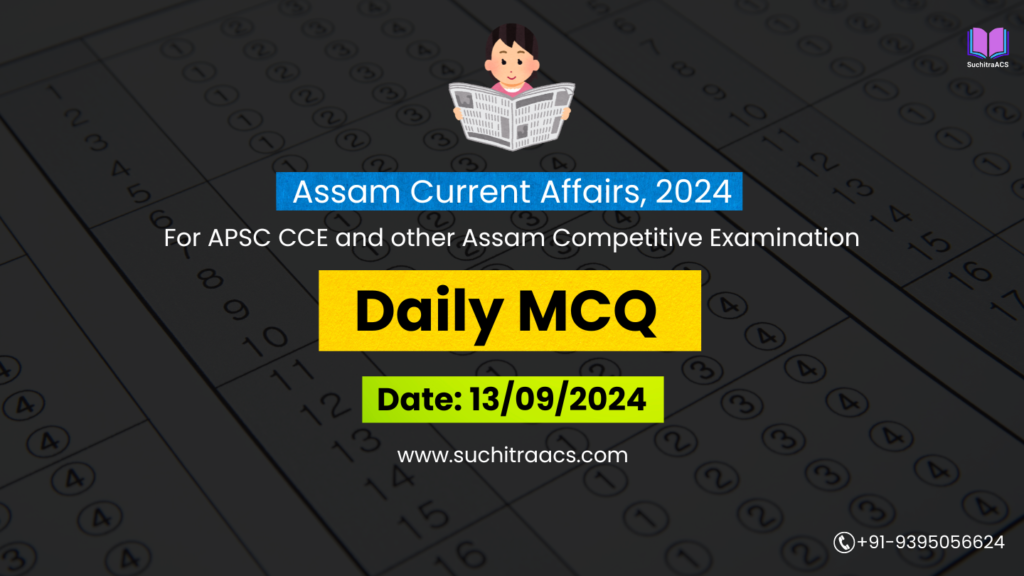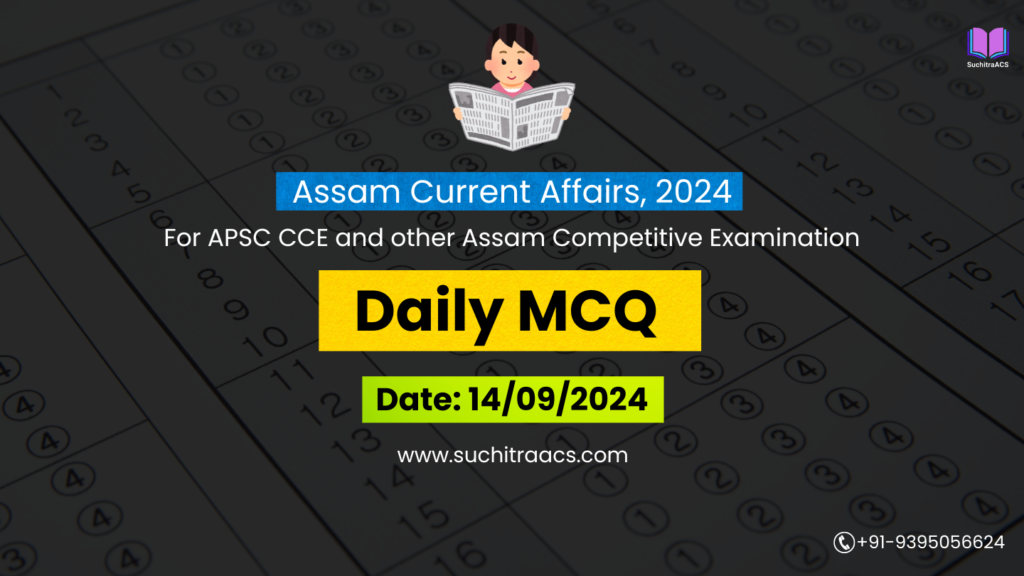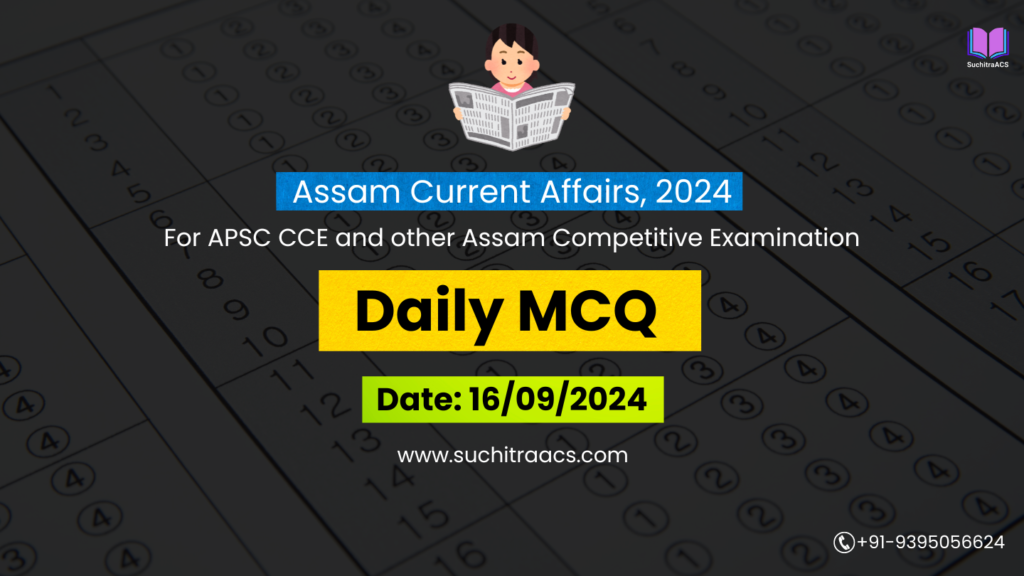APSC MCQs / APSC Prelims Practice Questions based on Assam Tribune (Daily) – 16/01/2025
For APSC CCE and other Assam Competitive examinations aspirants, practicing Daily MCQs is vital. This blog covers most important Prelims questions from the Assam Tribune today (16-01-2025). These issues are key for both APSC Prelims syllabus, offering insights into the important topics of current affairs.
APSC MCQs / APSC Prelims Practice Questions (Date: 16/01/2025)
1. Deepor Beel and Wetland Conservation
Question 1:
Which of the following are threats to Deepor Beel?
- Siltation caused by deforestation in surrounding areas.
- Urban encroachment and unregulated construction.
- Introduction of invasive aquatic species.
Select the correct answer using the code below:
- (a) 1 and 2 only
- (b) 2 and 3 only
- (c) 1 and 3 only
- (d) 1, 2, and 3
Answer: (d) 1, 2, and 3
Explanation:
All three are significant threats affecting the ecological health of Deepor Beel.
2. Impact of Climate Change on Indigenous Food Systems in Northeast India
Question 3:
Which of the following crops is promoted under the Millets Mission as a climate-resilient crop?
- Sorghum
- Finger Millet
- Barley
Select the correct answer using the code below:
- (a) 1 only
- (b) 1 and 2 only
- (c) 2 and 3 only
- (d) 1, 2, and 3
Answer: (b) 1 and 2 only
Explanation:
Sorghum and Finger Millet are climate-resilient crops promoted under the Millets Mission. Barley is not included in this initiative.
Question 4:
Which of the following is a characteristic of Shifting Cultivation (Jhum)?
- It involves clearing forested areas for temporary agricultural use.
- It is a sustainable practice with minimal soil erosion.
- It is prevalent in the Northeast region of India.
Select the correct answer using the code below:
- (a) 1 only
- (b) 1 and 3 only
- (c) 2 and 3 only
- (d) 1, 2, and 3
Answer: (b) 1 and 3 only
Explanation:
While Jhum cultivation involves clearing forest areas and is prevalent in the Northeast, it is not sustainable due to soil erosion and degradation.
3. State Connectivity Projects and Assam’s Economic Growth
Question 5:
Which of the following is/are correct about the Bharatmala Pariyojana?
- It focuses on developing road infrastructure to enhance trade corridors.
- It is a scheme exclusive to Northeast India.
- It is implemented under the Ministry of Road Transport and Highways.
Select the correct answer using the code below:
- (a) 1 only
- (b) 1 and 3 only
- (c) 2 and 3 only
- (d) 1, 2, and 3
Answer: (b) 1 and 3 only
Explanation:
- Statement 1 is correct: The project aims to enhance trade and connectivity.
- Statement 2 is incorrect: It is a nationwide initiative.
- Statement 3 is correct: The Ministry of Road Transport and Highways implements the scheme.
Question 6:
Which of the following waterways passes through Assam?
- National Waterway 1 (NW1)
- National Waterway 2 (NW2)
- National Waterway 16 (NW16)
Select the correct answer using the code below:
- (a) 1 and 2 only
- (b) 2 only
- (c) 1 and 3 only
- (d) 2 and 3 only
Answer: (b) 2 only
Explanation:
National Waterway 2 runs through Assam along the Brahmaputra River. NW1 is on the Ganga River, and NW16 is located elsewhere.
4. India’s Progress Towards Ethanol Blending
Question 7:
Consider the following statements about ethanol blending:
- Ethanol blending reduces carbon emissions.
- India achieved 20% ethanol blending nationwide by 2023.
- Second-generation ethanol is produced from crop residues and non-food biomass.
Which of the statements given above is/are correct?
- (a) 1 and 2 only
- (b) 2 only
- (c) 1 and 3 only
- (d) 1, 2, and 3
Answer: (c) 1 and 3 only
Explanation:
- Statement 1 is correct: Ethanol blending lowers carbon emissions.
- Statement 2 is incorrect: India is targeting 20% ethanol blending by 2025.
- Statement 3 is correct: Second-generation ethanol uses non-food biomass.
Question 8:
Which of the following is/are sources of ethanol production in India?
- Sugarcane
- Rice husk
- Wheat bran
Select the correct answer using the code below:
- (a) 1 only
- (b) 1 and 2 only
- (c) 2 and 3 only
- (d) 1, 2, and 3
Answer: (d) 1, 2, and 3
Explanation:
Ethanol can be produced from sugarcane, rice husk, wheat bran, and other agricultural residues.
 APSC Prelims Crash Course, 2025
APSC Prelims Crash Course, 2025
at most affordable rate in Assam!

🔔 Join Our WhatsApp Study Group!
For exclusive access to premium quality content, including study materials, current affairs, MCQs, and model answers for APSC CCE and other Assam competitive exams.
Click here to join: SuchitraACS Study WhatsApp Group
📚 Want to know more about SuchitraACS’s most affordable courses?
Click here to know more: SuchitraACS Courses for APSC CCE and Assam Competitive Examinations




